Northern Gannet, Jan-van-gent, Basstölpel, Ganso-patola, Alcatraz Atlántico
Spotted in the Alentejo region of Portugal. Northern Gannet sound
Gannets are seabirds comprising the genus Morus, in the family Sulidae, closely related to the boobies.

More photos at the bottom of this page:
The Gannets are large black and white birds with yellow heads. They have long pointed wings and long bills. Northern Gannets are the largest seabirds in the North Atlantic, with a wingspan of up to 2 metres. The other two species occur in the temperate seas around southern Africa, southern Australia and New Zealand.
Gannets hunt fish by diving from a height into the sea and pursuing their prey underwater. Gannets have a number of adaptations which enable them to do this:
– they have no external nostrils;
– they have air sacs in their face and chest under their skin which act like bubble wrapping, cushioning the impact with the water;
– their eyes are positioned far enough forward on their face to give them binocular vision, allowing them to judge distances accurately.
Gannets can dive from a height of 30 m, achieving speeds of 100 km/h as they strike the water, enabling them to catch fish much deeper than most airborne birds.
The Gannet’s supposed capacity for eating large quantities of fish has led to “Gannet” becoming a disapproving description of somebody who eats excessively, similar to “glutton”.
Gannets are colonial breeders on islands and coasts, normally laying one chalky, blue egg. It takes five years for Gannets to reach maturity. First-year birds are completely black, and subsequent sub-adult plumages show increasing amounts of white.
The most important nesting ground for Northern Gannets is the United Kingdom with about two thirds of the world’s population. These live mainly in Scotland, including the Shetland Isles. The rest of the world’s population is divided between Canada, Ireland, Faroe Islands and Iceland, with small numbers in France (they are often seen in the Bay of Biscay), the Channel Islands, Norway and a single colony in Germany on Heligoland. The biggest Northern Gannet colony is in the Scottish islands of St Kilda; this colony alone comprises 20% of the entire world’s population. Sulasgeir off the coast of the Isle of Lewis, Bass Rock in the Firth of Forth, Grassholm in Pembrokeshire and Bonaventure Island, Quebec are also important Northern Gannet breeding sites.
The Skellig Islands off the south-west coast of Ireland hold some 27,000 pairs of Northern Gannets, the second largest colony in the world.
The three Gannet species are now usually placed in the genus Morus, Abbott’s Booby in Papasula, and the remaining boobies in Sula. However, some authorities believe that all nine sulid species should be considered congeneric, in Sula. At one time, the various Gannet species were considered to be a single species.
– Northern Gannet, (also known as “Solan Goose”), Morus bassanus
– Cape Gannet, Morus capensis
– Australasian Gannet, Morus serrator



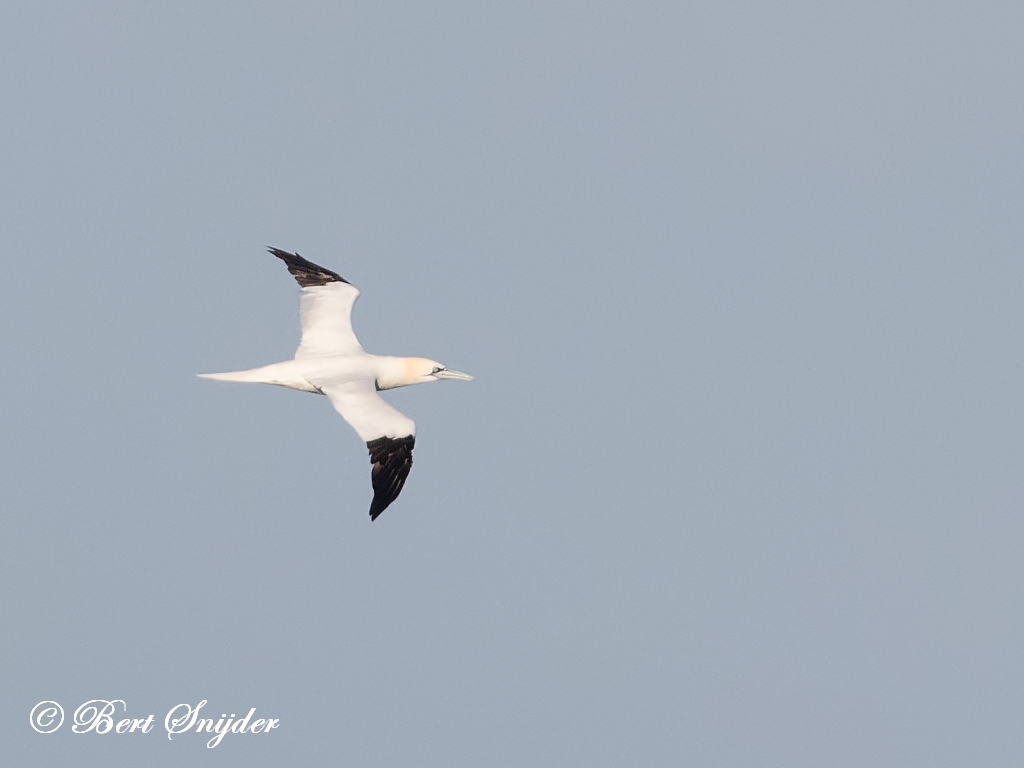
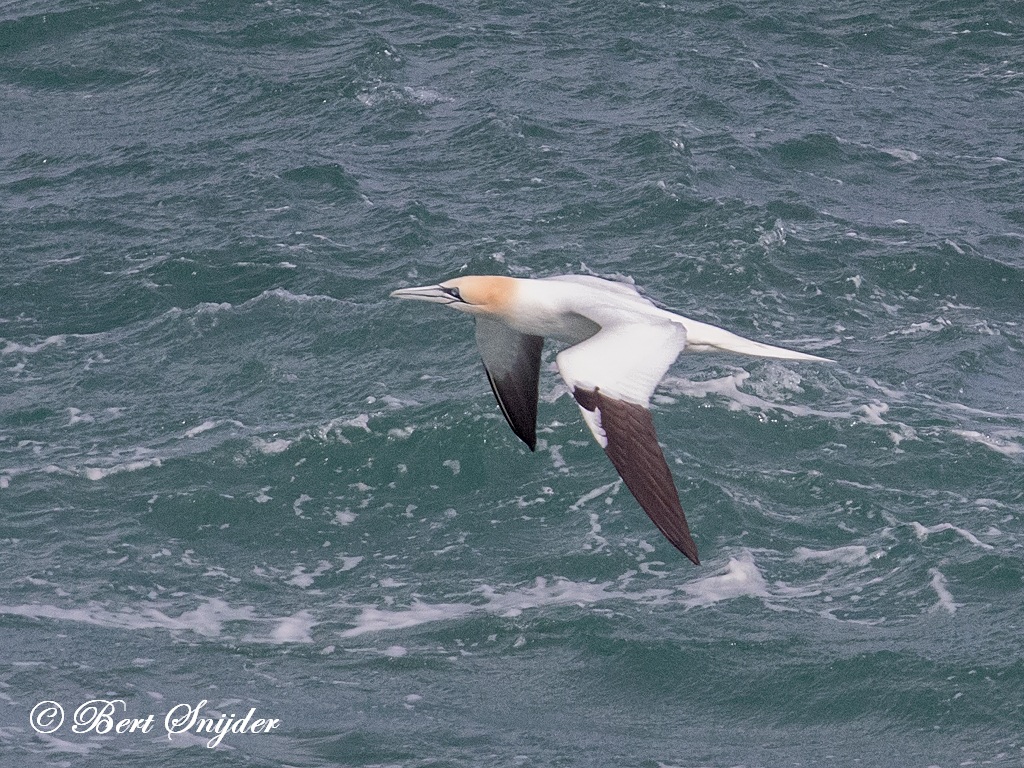
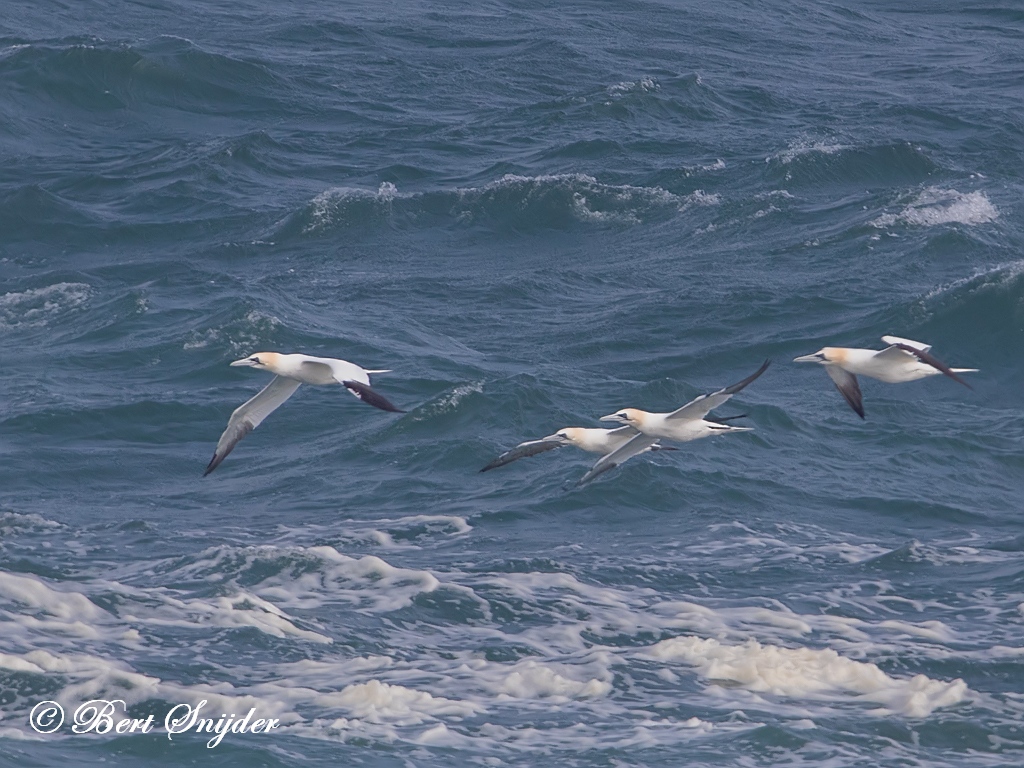
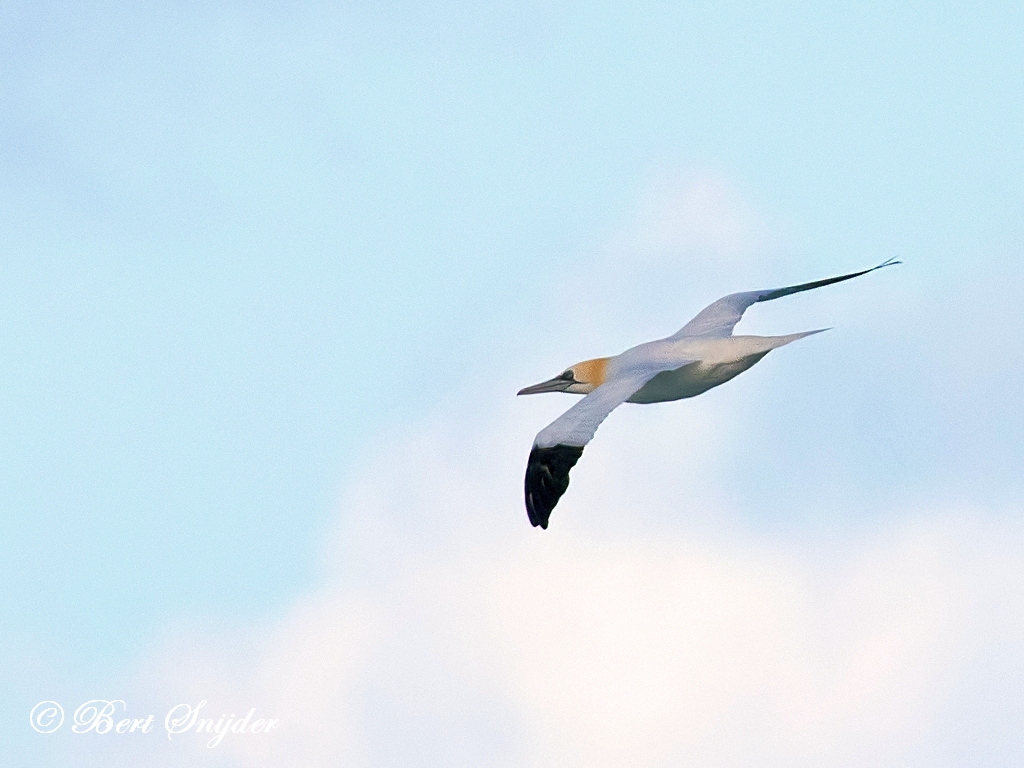
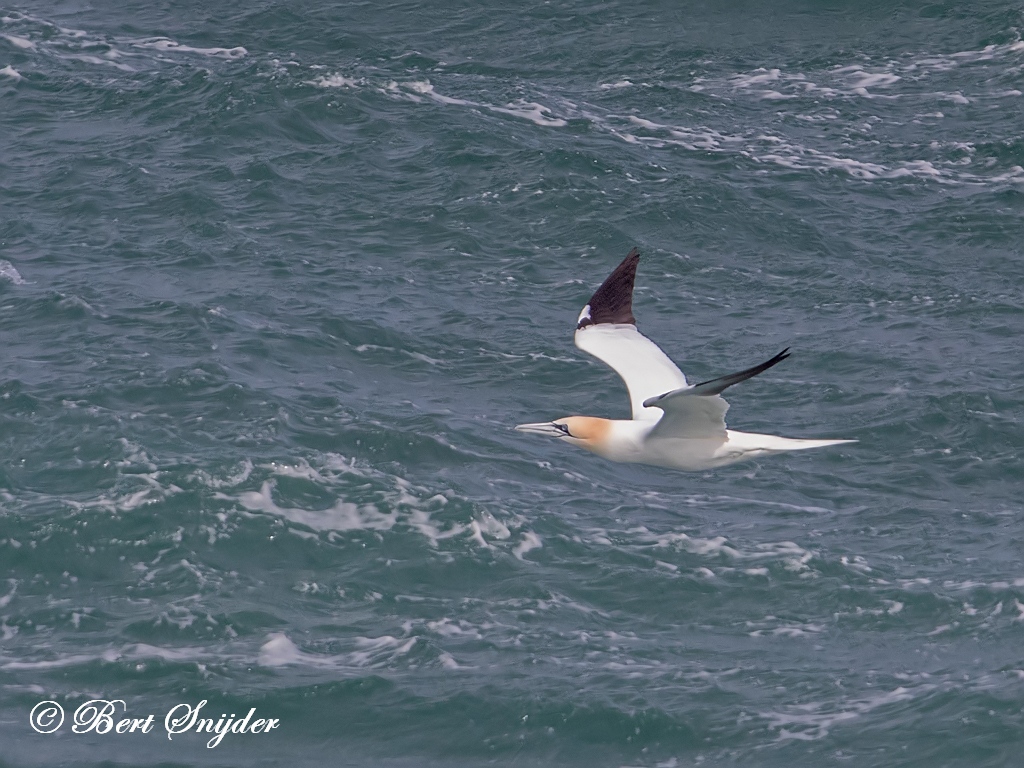
Other synonyms:
Asturian: Mazcatu
Breton: Ar morskoul boutin, Morskoul
Catalan: Mascarell
Catalan (Balears): Mascarell
Czech: Terej bílý
Welsh: Gwylan dydd, Gwylanwydd, Hugan, Mulfran lwyd, Mulfran wen, Y gan
Danish: Sule
German: Basstölpel, Basstölpel-bassana
English: Atlantic Gannet, Gannet, North Atlantic Gannet, Northern Gannet, Northern Gannett, Solan Goose
Esperanto: Sulo
Spanish: Alcatraz, Alcatraz Atlántico, Alcatraz Común, Bobo Norteño
Spanish (Mexico): Bobo Norteño
Estonian: Suula
Basque: Kofrie, Mascarell, Zanga
Finnish: Suula
Faroese: Grásúla, Hvítsúla, Oyðisúla, Súla
French: Fou de Bassan
Irish: Gainéad
Gaelic: Asau, Ausa, Bass goose, Caraid-nan-Gaidheal, Eun ban an sgadain, Guga, Sùlaire
Galician: Mascarell, Mascato
Manx: Gant
Hungarian: Szula
Icelandic: Súla
Italian: Sula, Sula bassana, Sula settentrionale
Japanese: shirokatsuodori
Cornish: Sethor
Latin: Moris bassana, Morus bassanus, Morus bassanus bassanus, Sula bassana, Sula bassana bassana, Sula bassanus
Lithuanian: Šiaurinis padukelis
Maltese: Sula
Dutch: Jan van Gent, Jan-van-gent
Norwegian: Havsule
Polish: gluptak
Portuguese: ganso patola, Ganso-patola, Ganso-patola-comum
Northern Sami: Suvla
Slovak: Sula biela
Slovenian: navadni strmoglavec, stmoglavec, strmoglavec
Albanian: Basani i çmendur
Swedish: Havssula
Turkish: Sümsük
Travel Birdwatching Holiday Alentejo, Vacation Portugal for birders to see birds on your trip. Guided Birdwatching Tours & Trips